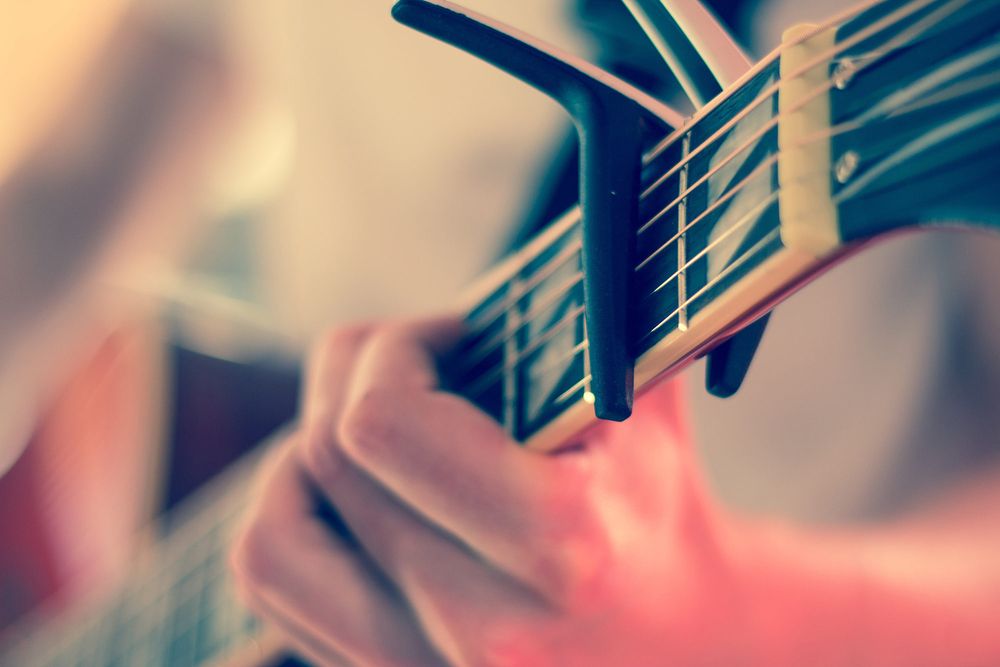2. What do I need a capo for?
A capo lets you easily transpose all chords using open strings up one or more semitones. For anyone accompanying a singer on guitar or playing for themselves while singing, a capo can be extremely helpful. Imagine having a song prepared in its original key, but the singer's vocal range doesn't quite fit within that range. You need to reposition and transpose to a different key. That's where a capo comes in handy. For instance, if the song needs to be played two semitones higher, just place the capo on the second fret, and play the chords as usual, no need to rethink or use barre chords. It only works when transposing up, but it's still quite handy. Also, when you're playing in a key requiring mostly barre chords, the capo can make things easier.
In such cases, just slide it where your barre finger usually presses down – usually, that's the index finger.
Ein Kapodaster kann auch hilfreich sein, wenn man mit zwei oder mehr Gitarristen in einer Band unterschiedliche Akkord-Voicings spielen möchte. Bestes Beispiel ist der Song Hotel California von den Eagles. Die zwölfsaitige E-Gitarre, gespielt von Don Felder, hat den Kapo im 7. Bund, die von Glenn Frey wird mit Kapo im 2. Bund gespielt, und Joe Walsh spielt die E-Gitarre ohne Kapo.
A capo can also be useful when multiple guitarists in a band want to play different chord voicings. Take "Hotel California" by the Eagles—Don Felder rocks a 12-string with a capo on the 7th fret, Glenn Frey rolls with one on the 2nd, and Joe Walsh shreds without it. That's the power of the capo—versatile, essential, and a game-changer for your guitar journey.


